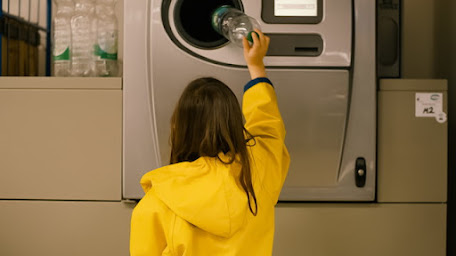
Paul Verhoeven's Elle is an off putting and perverse thriller that provides Isabelle Huppert a chance to show, once again, why she is one of the world's finest actresses. Huppert plays an executive of a gaming company who, in the opening moments of the film, is raped in her home by a masked intruder. Her reaction is peculiar, she does not call the police and proceeds with her day to day life, but she is curious about the identity of her attacker and seems to be plotting some sort of retribution. When she unmasks the rapist, a cat and mouse game ensues between the two; indicating Huppert's character experiences a frisson of pleasure from their interchange.
Verhoeven is drawn to this sort of dark, erotic suspense film, like Basic Instinct and The Fourth Man. His early films, such as Diary of a Whore and Turkish Delight, skirted close to being soft core porn exploitation films. This flaunting of eroticism in a vulgar, unabashed manner continues in his films up to Showgirls; a film, despite its dire reputation, I found to be more moving and less ludicrous than Basic Instinct. Even in an alleged disaster, like his flop medieval saga Flesh and Blood, Verhoeven's fascination with the ambivalence of sexuality gave his films thematic weight even when his narratives fall apart.
After a hiatus, Verhoeven returned with a more mature style in Black Book, his best film. Happily, Elle is also relatively restrained compared to Verhoeven's early films. The perverse and flamboyant sexuality central to Verhoeven's work is still evident, but is masked by bourgeois propriety. When the husband of Huppert's Character's best friend comes to her office for an assignation, Huppert is not in the mood, but will jack off the dude into a waste pail. Since the corporate world is here portrayed as a misogynistic, dog eat dog one where women have to act as macho as their male counterparts, Huppert's act is just a bit of business, like milking a cow.
The misogyny of her workplace is exemplified by the video game Huppert's company is constructing. It is a violent and hypersexualized fantasy game in which sexual assault is glorified. Huppert's character has no qualms about this, she even urges her charges to increase the violence level to appeal to consumers.
Elle's moral ambiguity is underlined by its conclusion. Huppert's son has killed her rapist when he catches him assaulting his mother again; an assault Huppert's character seems to enjoy on some level. When Huppert encounters the assailant's wife, she thanks Huppert for trying to help him with his "problem". This woman has already been shown to be a devout Catholic, unlike the majority of the characters in Elle. Her reaction to Huppert's complicity with her husband is one of Christian forgiveness. This point of view, that we are all sinners seeking absolution is in stark contrast to the Darwinian struggles we see most of the in Elle reveling in. Verhoeven does not favor either point of view though he is a Christian, of sorts. Just as Jennifer Jason Leigh's character in Flesh and Blood loves both the "bad' Rutger Hauer and the "good" Tom Burlinson, Verhoeven is acknowledging both the animalistic and transcendent in our nature.
None of this would matter if Elle were no so elegantly constructed. He has always gotten good performances from his players, but Verhoeven has often cheapened his films with outlandish sexcapades, crotch shots, and three breasted aliens. Here, as in Black Book, he shows taste and, even, restraint. Elle presents us a world with chic outfits and pads, dark avenues, and iron gates which create a menacing view of modern France. Paul Verhoeven has grown up. (4/4/17)


























